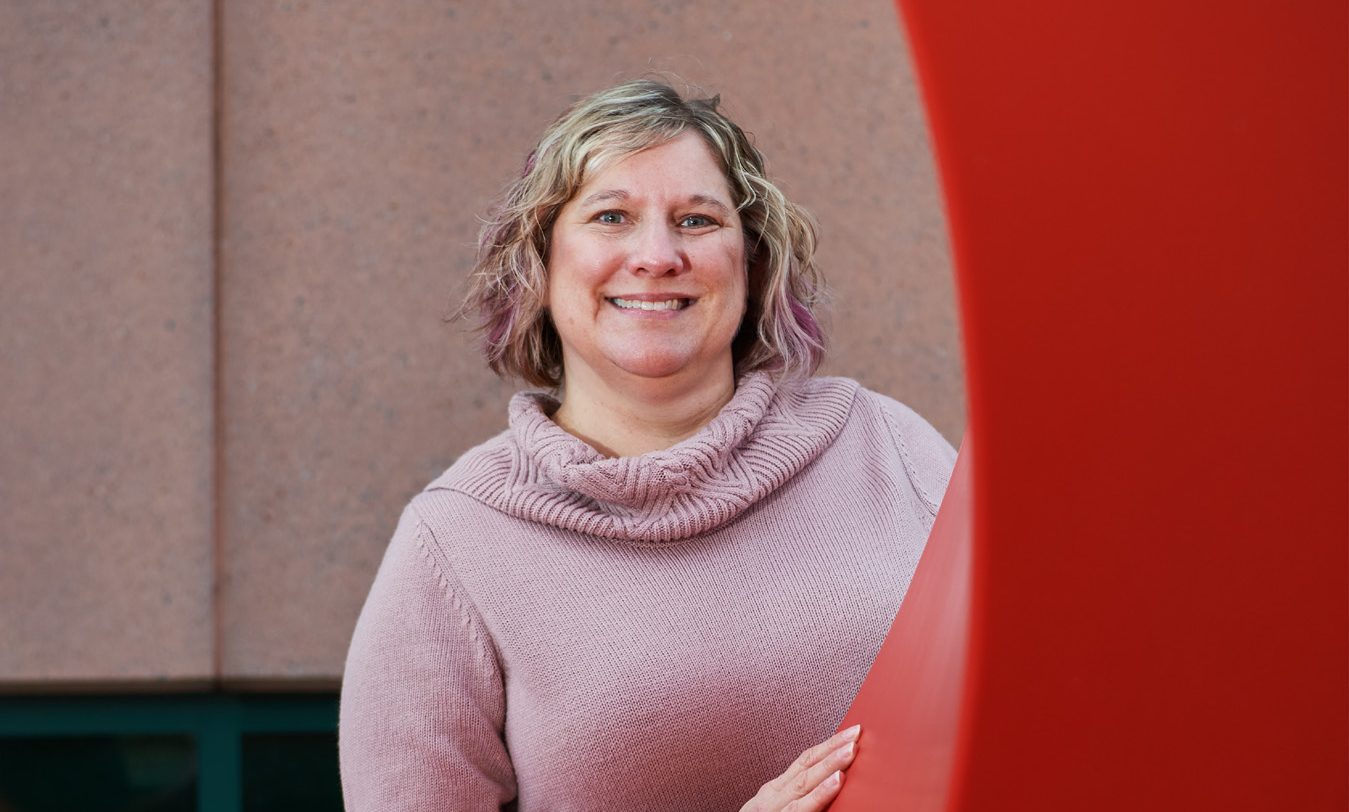
HDFS 1060 Close Relationships Across The Lifespan
Students who take "Close Relationships" learn the reasons why some relationships work out and others don't. After taking the class we still might not always do the right thing. But at least we'll know what went wrong.
The Instructor:
Foreign relations is a natural captivation for anyone growing up in the suburbs of Washington, D.C., and Kari Adamsons was no exception. But when, in college, she volunteered helping mothers prevent child abuse, her focus zoomed in from relations between countries to relations between people. The organization asked her to search the literature for information on fathers and child abuse, and she found almost nothing. Much of Adamsons' work since has focused on fathering and parent-child relationships.
"I've always been the type where if we don't know something, I'm going to go find out," Adamsons says. And unlike most areas where we know a lot about men and not as much about women, in parenting the opposite is true. At UConn, this led Adamsons to teach a Human Development and Family Sciences (HDFS) class called Men and Masculinity, as well as regularly taking on HDFS 1060 Close Relationships (this course is offered on four campuses by a range of faculty).
Class Description:
"It's a very real class. Everybody has relationships. We might as well learn to be better at them," Adamsons says.
Classified as general education and often fully enrolled with 350 students, it's a survey course that touches on friendship, romance, parenting, attraction, communication, intradependence, lying, and betrayal — all the good stuff. There are plenty of multiple choice tests, but that doesn't mean they don't go deep. Adamsons gives several assignments in which the students must apply something they learned in class to their own life, and then write about it. And toward the end of the course she has them write a two- to three-page reflection on one specific thing they've learned.
She gets a lot of disclosures in those writing assignments. Sometimes she refers students to mental health services. Sometimes she offers to be available just to bounce ideas around. "I'm always struck by the number of young men who come to talk to me about their relationships. I assume they discuss stuff with me that's not necessarily socially acceptable among male friends," Adamsons says. "I'm not a therapist, I'm not a friend, I'm not their mom, but I do have some life experience and expertise to share."
Teaching Style:
Authentic. Adamsons shares real examples from her own life and the lives of people she knows, and then she encourages the students to find examples of their own. This class is not meant to be book learning — she wants her students to apply it.
She does a lot of myth busting in the course. Her favorites are that opposites attract, jealousy is healthy, and that everything that happens is simply fate. "Not! What a horrible idea! Try something different and you might get different results. Similarity is much easier to handle over the long term. And jealousy is not healthy," she emphasizes. Then she makes her students classify their own attachment style. Some people are very worried they love a partner more than their partner loves them, which leads to jealousy. Others are very comfortable, trust their partner, know if they break up, they'll still be okay. Different still are the people who've been burned multiple times and feel they're better off alone. "Once students are aware of their own style, they can examine it, and maybe change how they relate to their own feelings and to their partner."
At this point in the interview, we stop and have a laugh about how parents worry that they might cause a dysfunctional adult attachment style in a child. Actually it's not really a laugh. More of a shiver of fear. But Adamsons is reassuring. "Kids are really resilient," she says. "And parents are just one of many influences — kids learn from all of the relationships around them!" A relief — and we come back to basics. Although the class covers all types of relationships, the average age of the students does lend itself to romance.
"I've had people start dating in these classes. For men, the odds are pretty good. And women — these are men willing to learn about relationships!" She's seen relationships end during the course of the class, too. "People learn some things won't work, these behaviors aren't healthy, and they can let go," Adamsons says. They're applying the lessons.
Why We Want to Take It Ourselves:
In a world that can seem full of dysfunctional relationships and bad communication, Adamsons' class provides knowledge you can use every day. And it comes from a very real place of true experience, and sometimes heartbreak.
Adamsons has no children of her own, but she parented foster children for several years — a challenging relationship model to be sure. "You have all the responsibility and none of the authority. You have to get your child to all the doctor appointments, but can't schedule any of them," she says. And you can't make promises or long-term commitments. The family that adopted her foster children decided it would be easier to not have Adamsons as a continued presence in their lives. And just like that, she was cut off. Sometimes relationships end, whether we want them to or not. Some lessons are harder than others.
In terms of course takeaways, Adamsons says her fondest dream is for her students to learn both practical knowledge and some self-acceptance. "Students tell me, 'You must have a perfect relationship.' I laugh and laugh and laugh. I just tell them no — I just know the terms for what I've done wrong. I know what it's called!"
By Kim Krieger
Photo by Peter Morenus

Leave a Reply